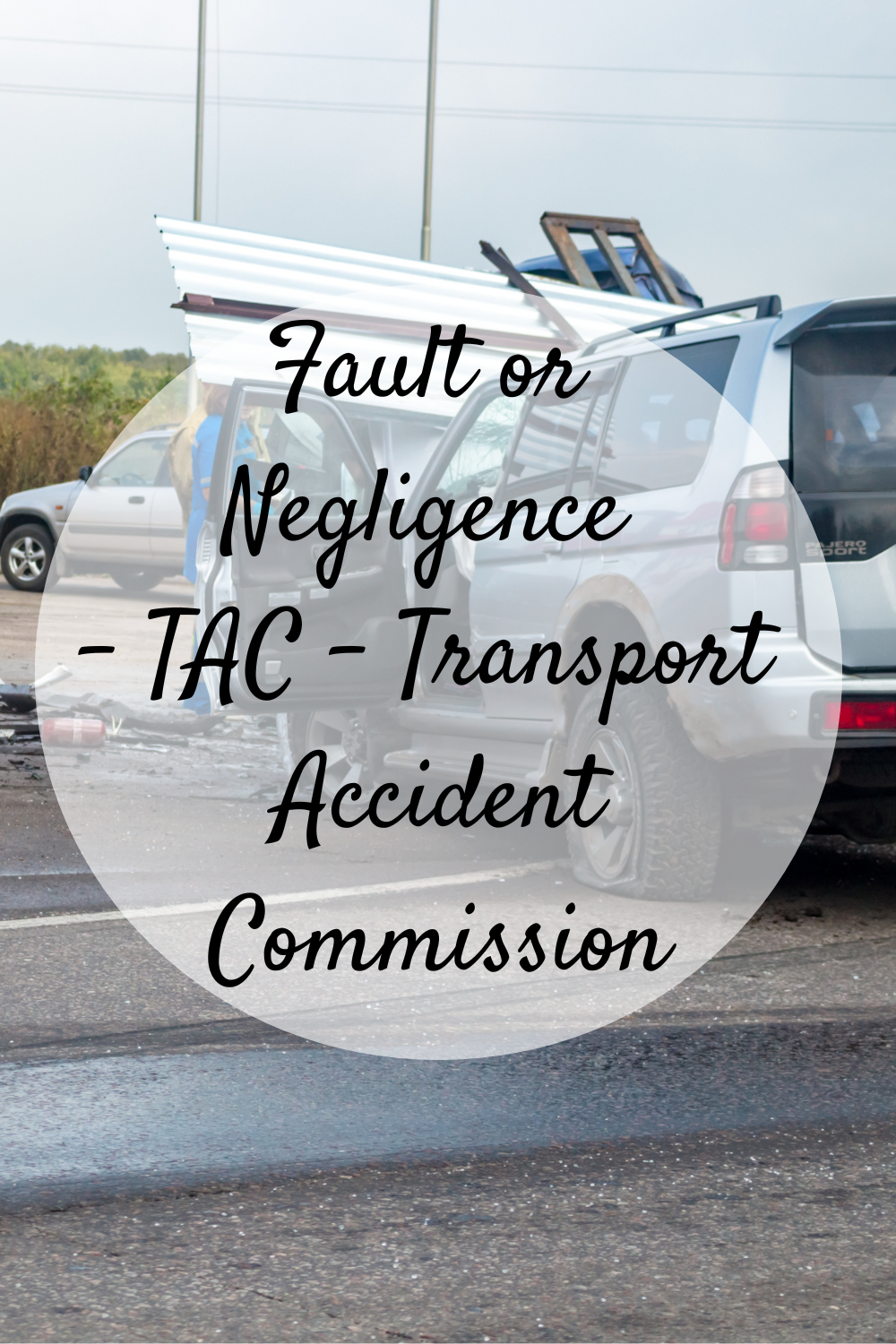

When you think about fault or negligence in relation to the Transport Accident Commission (TAC), it’s essential to recognize how these concepts directly impact your rights and potential compensation after an accident. Understanding who’s at fault can shape not just your claim but your entire approach to recovery.
You might find yourself wondering about the steps you should take immediately after an incident or the evidence you need to gather. Seeking expert legal guidance for car accidents can provide clarity in navigating these complexities.
The nuances can be intricate, and knowing where to start could make all the difference in your situation. What will you uncover next?
When it comes to accidents, understanding fault and negligence is essential, as it determines who’s responsible for the injury or loss.
Fault refers to failing to take reasonable care, resulting in harm to another party.
Negligence, a key aspect of fault, involves a breach of duty that leads to accidents or injuries.
It’s important to distinguish between fault and intentional harm; negligence doesn’t require intent to cause damage.
In personal injury claims, establishing fault or negligence is critical for determining legal liability.
Courts often assess these elements through evidence, including testimonies and reports, to decide who’s accountable.
This understanding can greatly impact the outcome of your claim or legal case.
Identifying at-fault parties in an accident involves evaluating the actions and behaviors of everyone involved to determine who failed to exercise reasonable care.
You’ll need to reflect on how each person’s conduct contributed to the incident. For instance, were they distracted, speeding, or not following traffic rules?
Gather information from police reports, eyewitness statements, and any available video footage to build a clear picture of the events.
Remember, multiple parties can share fault, complicating the determination.
If you’re unsure, consulting with legal experts can greatly clarify the situation. They can help you analyze the facts and applicable laws, ensuring you understand the implications of fault in your specific case.
Common examples of fault in accidents include actions like failing to yield at a stop sign, which can lead to serious collisions.
Understanding these actions can help you recognize when someone’s negligence is at play. Here are some common examples:
Recognizing these faults can be essential in personal injury claims and understanding your rights after an accident.
After an accident, it’s essential to assess the situation and guarantee everyone’s safety before taking further steps.
Check for injuries and call emergency services if needed. If it’s safe, move vehicles out of traffic and exchange information with the other parties involved, including names, contact details, and insurance information.
Document the scene by taking photos and notes about the accident, as this will be beneficial later. If you suspect fault, gather witness statements to support your case.
Report the accident to the TAC, regardless of who’s at fault.
If you’re looking for more information on fault or negligence related to TAC, there are several valuable resources available to help you maneuver the claims process.
You can find essential guidance through the following:
These resources will empower you with the knowledge needed to make informed decisions regarding your claims, ensuring you understand your rights and available options.
To prove negligence in your accident case, gather evidence like police reports, witness statements, and photos. Document your injuries and expenses, and consult a personal injury lawyer for guidance on establishing liability effectively.
You’ve got specific time limits for filing a claim, usually ranging from a few months to a couple of years. It’s essential to check your local laws to guarantee you don’t miss your deadline.
Yes, you can still claim even if you were partially at fault. Courts often consider your percentage of fault, and compensation may be adjusted accordingly, but you’re still eligible for a claim.
After an accident, your insurance rates might increase, depending on your provider’s policies and your driving history. It’s best to check directly with them to understand how your specific situation could affect your premiums.
If the at-fault party is uninsured, contact your own insurance provider immediately. They may cover damages under your policy. Document everything, and consider consulting a lawyer to explore your legal options for recovery.
In summary, understanding fault and negligence is essential for managing the aftermath of a transport accident.
By identifying at-fault parties and recognizing common examples of negligence, you can better advocate for your rights and potential compensation.
Remember to take immediate steps after an accident, such as gathering evidence and witness statements.
For further guidance, consider reaching out to National Compensation Lawyers or exploring the TAC’s resources.
Being informed can make a significant difference in your claims process and overall recovery.
Each time a smartphone upgrade cycle completes or a computer reaches the end of its…
If you know anything about Minecraft, you are aware of its popularity among video games…
Spring is here, the weather is getting warmer and we’re just a handful of weeks…
What if the secret to lasting health isn’t just in prescriptions, but in the way…
What transforms a house into a home that truly reflects your personality, lifestyle, and aspirations?…
What makes a photographer more than just someone behind a camera? For many, it’s the…
This website uses cookies.